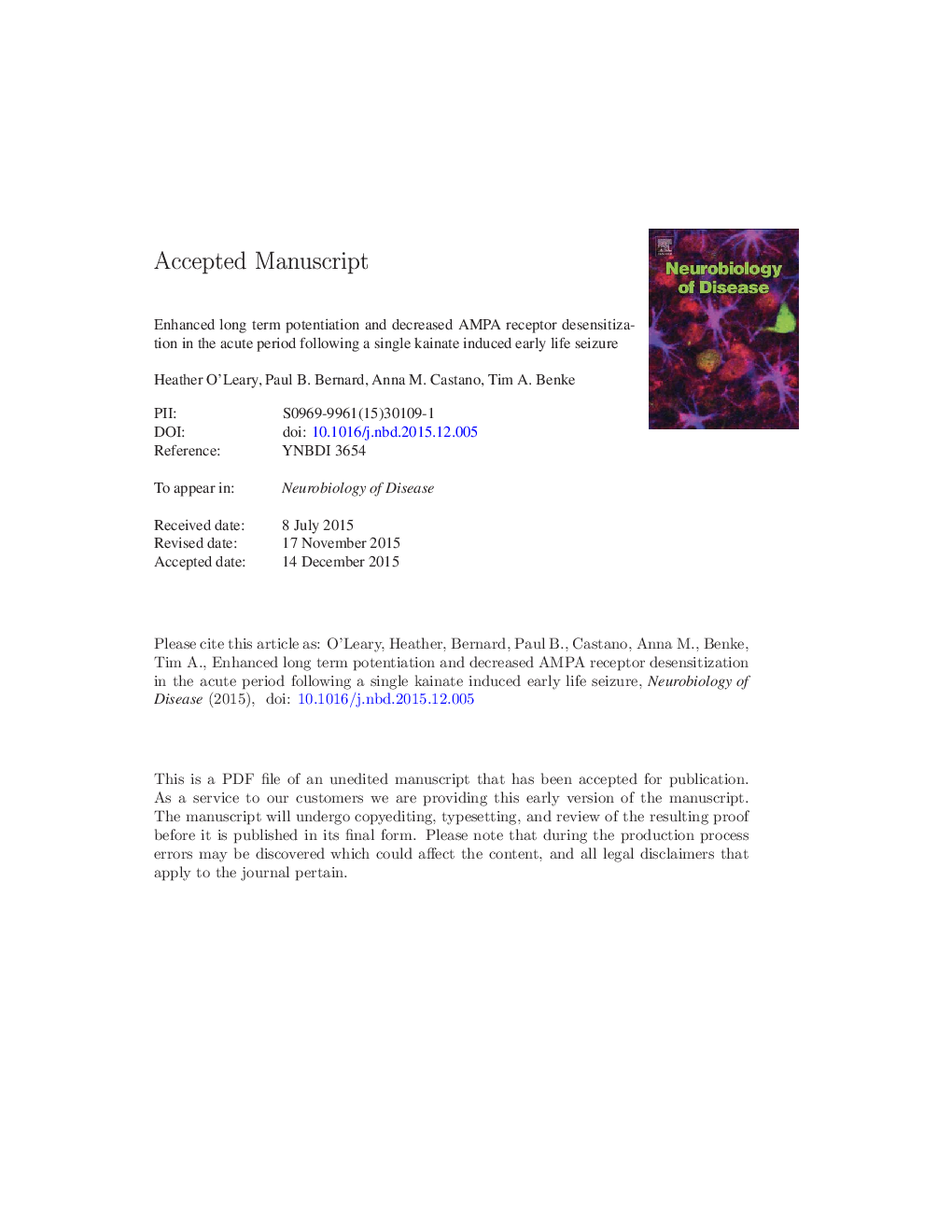| Article ID | Journal | Published Year | Pages | File Type |
|---|---|---|---|---|
| 6021514 | Neurobiology of Disease | 2016 | 44 Pages |
Abstract
Neonatal seizures are associated with long term disabilities including epilepsy and cognitive deficits. Using a neonatal seizure rat model that does not develop epilepsy, but develops a phenotype consistent with other models of intellectual disability (ID) and autism spectrum disorders (ASD), we sought to isolate the acute effects of a single episode of early life seizure on hippocampal CA1 synaptic development and plasticity. We have previously shown chronic changes in glutamatergic synapses, loss of long term potentiation (LTP) and enhanced long term depression (LTD), in the adult male rat ~ 50 days following kainic acid (KA) induced early life seizure (KA-ELS) in post-natal (P) 7 day old male Sprague-Dawley rats. In the present work, we examined the electrophysiological properties and expression levels of glutamate receptors in the acute period, 2 and 7 days, post KA-ELS. Our results show for the first time enhanced LTP 7 days after KA-ELS, but no change 2 days post KA-ELS. Additionally, we report that ionotropic α-amino-3-hydroxy-5-methyl-isoxazole-propionic acid type glutamate receptor (AMPAR) desensitization is decreased in the same time frame, with no changes in AMPAR expression, phosphorylation, or membrane insertion. Inappropriate enhancement of the synaptic connections in the acute period after the seizure could alter the normal patterning of synaptic development in the hippocampus during this critical period and contribute to learning deficits. Thus, this study demonstrates a novel mechanism by which KA-ELS alters early network properties that potentially lead to adverse outcomes.
Keywords
Related Topics
Life Sciences
Neuroscience
Neurology
Authors
Heather O'Leary, Paul B. Bernard, Anna M. Castano, Tim A. Benke,
